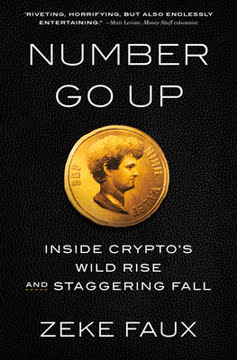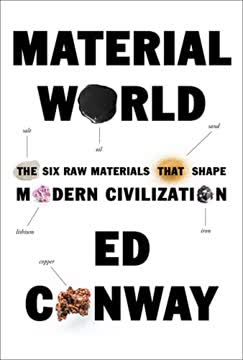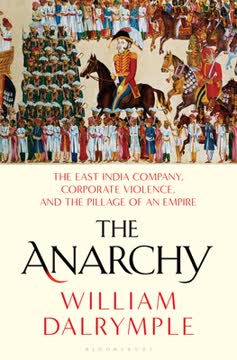Key Takeaways
1. Nehru's "Temples" Strategy Prioritized Heavy Industry Over Human Capital
The steel-making plants are also huge.
Focus on heavy industry. Nehru's vision for India centered on large-scale, capital-intensive industries, believing they were the "fountainheads of other industries." This strategy, inspired by Soviet models, prioritized steel plants, dams, and scientific laboratories over investments in agriculture, education, and labor-intensive manufacturing.
Neglect of agriculture and SMEs. This focus led to the neglect of agriculture, where land reforms were poorly implemented, and extension services failed to reach farmers effectively. Small and medium-sized enterprises (SMEs), which could have generated significant employment, were also sidelined in favor of large, state-controlled projects.
Limited job creation. The heavy industry approach failed to create enough jobs for India's rapidly growing population, leading to widespread underemployment and social unrest. This strategic misstep set India on a path of jobless growth and persistent inequality.
2. India's "Fake Socialism" Perpetuated Inequality and Corruption
Socialism means the creation of equal opportunity for all.
Socialism in name only. Despite espousing socialist ideals, India never truly implemented socialist policies. Central planning and big government were mistaken for socialism, while the actual focus remained on promoting the interests of the powerful and elite.
Unequal development. Public policy did not work for the general welfare, and India's development process was deeply unequal. The so-called socialist years saw the rise of an oligopolistic industrial structure and a corrupt bureaucracy, benefiting a select few at the expense of the masses.
Neglect of public goods. The focus on heavy industry and central planning led to the neglect of essential public goods like education, health, and urban infrastructure. This neglect further exacerbated inequality and hindered the creation of a more inclusive and equitable society.
3. Missed Opportunities: India's Failure to Emulate East Asian Export-Led Growth
Japan has even more to teach us, because Russia gives us a very complicated picture.
Lost competitiveness. In the early 1950s, India's share of world trade in manufactured goods was comparable to Japan's. However, India failed to capitalize on the post-war trade boom and lost ground to East Asian nations like Japan, South Korea, Taiwan, and later, China.
Failure to leverage exports. India's inability to use exports to generate jobs represents a significant failure. East Asian nations successfully created employment through labor-intensive manufactured exports, while India remained heavily reliant on finance and construction.
Consequences of missed opportunities. The recurring inability to use exports to generate jobs represents India’s most vivid failure of the Red Queen test. This failure has contributed to persistent underemployment, limited economic mobility, and a widening gap between the rich and the poor.
4. Broken Norms and Accountability Led to Democratic Decay
When those norms are anchored in a personal morality, they become a social asset because they foster the trust necessary for well-functioning markets and political institutions.
Erosion of social trust. Over time, social norms and political accountability eroded, making the rules and institutions of democracy a plaything of the privileged and powerful. Corruption, blurring of lines between criminals and politicians, and social violence became commonplace.
Weakened institutions. The parliament and judiciary became less effective in holding the executive accountable. In public and private life, violence to settle matters became more common.
Consequences of broken norms. Weakened norms and accountability have made the rules and institutions of democracy a plaything of the privileged and powerful; cooperation is severely lacking in the delivery of quality education, health, and urban spaces for all; justice is no longer blind and rampant environmental damage is ferociously amplifying the damage from the ongoing climate crisis.
5. Charismatic Leaders Bypassed Accountability, Enabling Abuse of Power
Jawahar is a thinker, Sardar a doer.
Charisma and its pitfalls. Charismatic politicians, like Nehru and Indira Gandhi, connected with voters through their words and manner, bypassing normal accountability checks. This allowed them to use the state's resources for their favored purposes, often neglecting the long-term interests of the people.
Nehru's idealism and its consequences. Nehru's idealism and nationalist fervor led him to prioritize heavy industrialization, a strategy that failed to create enough jobs. His charisma ensured repeated election victories, but his policies resulted in high inflation, persistent poverty, and a growing jobs shortfall.
Indira Gandhi's authoritarianism. Indira Gandhi, while also charismatic, used her power to establish a cynical, slogan-peddling political machine. She elevated corruption to the highest levels, clamped down on social anger with the heavy hand of the state, and established a pattern of strong-arm actions for those who followed her.
6. The Rise of Hindu Nationalism Further Fractured Indian Society
Men of factious tempers, of local prejudices, or of sinister designs, may, by intrigue, by corruption, or by other means, first obtain the suffrages, and then betray the interests of the people.
Social anger and Hindutva. With corruption and crime in politics strengthening their hold and economic inequalities widening, Indian democracy veered into dangerous territory. The mutating social anger gravitated to a new focal point: Hindutva—Hindu nationalism.
"Angry Hindu" mobs. Hindu nationalism marked a further tear in the social fabric as violent mobs sought new performance arenas. The "angry Hindu" became Hindutva's foot soldier, targeting Muslims and others perceived as opponents.
Electoral autocracy. The combination of Hindutva, criminal-politicians, and dark money mounted a merciless assault on democracy. V-Dem categorizes India as an "electoral autocracy," a nation that holds elections but where the rule of law and freedom of speech have fallen to unacceptably low levels.
7. Short-Term Focus and "Visible" Projects Undermined Long-Term Development
A week is a long time in politics.
The allure of visible projects. Politicians in a democracy, even at the best of times, have short horizons. Elected leaders often prioritize headline-grabbing policies and flashy rollouts of "visible" projects and glorious monuments over long-term investments in public goods.
Neglect of essential public goods. This short-term focus causes a neglect—even abuse—of the public goods essential for good jobs and human welfare: education, health, vibrant cities, a fair judicial system, and a clean environment.
Consequences of neglect. The neglect of public goods hinders economic development and perpetuates inequality. Efforts that advance economic development are doubly unforgiving: they require intense, long-term cooperation, and their heroes are unsung.
8. COVID-19 Exposed the Fragility of India's Economy and Social Fabric
The raw material of cinema is life itself.
Cities inhospitable to migrants. As in Calcutta during the 1943 Bengal famine, cities in 2020 were inhospitable to rural migrants. The lockdown revealed the vulnerability of millions of "temporary" migrants, who were trapped in hostile cities without work, income, or social safety nets.
Media suppression and hate. The government turned on its media critics, accusing them of spreading "fake news." The Hindu-Muslim divide reemerged in virulent form, with Hindu fanatics targeting Muslims and spreading hate across the country.
Widening inequalities. Economic inequalities became much wider, with the Ambani home in Mumbai serving as a stark contrast to the cramped living conditions of migrants in Dharavi. The pandemic exposed an India that was broken for hundreds of millions of Indians.
9. The Illusion of Progress: GDP Growth Masked Persistent Inequality
It takes all the running you can do, to keep in the same place. If you want to get somewhere else, you must run at least twice as fast as that!
GDP as a misleading metric. GDP, the sum of goods and services produced, is a misleading metric of a population's welfare because it skirts the all-important issue of who benefits and ignores the costs to future generations arising from reckless natural resource use.
Focus on well-being. A focus on the well-being of people leads to a wholly different interpretation of modern Indian history. Metrics of well-being tell a more consistently and ominously dispiriting story than recent spells of high GDP growth.
The precariously poor. While poverty fell alongside high GDP growth rates achieved after the mid-1980s, a question mark hangs over the extent of the achievement. Hundreds of millions of Indians continued to live precarious lives, keeping their heads just above basic sustenance levels.
10. The Need for Decentralization and a Moral Economy
You will always be an Indian at heart.
Business as usual will not work. Indian and international pundits remain committed to a business-as-usual technocratic approach, proposing more economic "liberalization" and "governance" reforms. However, political leaders disregard worthy ideas and instead are drawn to policies that serve their own financial and electoral interests.
The autocratic temptation. The proposition is that India cannot afford the "luxury" of democracy: a "savior" with dictatorial powers must first establish the basis for sustained growth. The autocratic temptation, however, is fraught with grave risks.
Decentralization and a moral economy. India needs more democracy through decentralization of authority to city and village governments. The economy is a moral universe whose inhabitants flourish when social norms foster trust and long-term cooperation.
Last updated:
Review Summary
India Is Broken receives mostly positive reviews, praised for its comprehensive analysis of India's economic and political history since independence. Readers appreciate the author's critical perspective on various governments and policies. The book is commended for its research, accessibility, and use of cultural references. Some criticize it for being overly negative or lacking balance. Overall, reviewers find it an important, thought-provoking read that challenges common narratives about India's development, though opinions on its conclusions vary.
Similar Books










Download PDF
Download EPUB
.epub digital book format is ideal for reading ebooks on phones, tablets, and e-readers.




